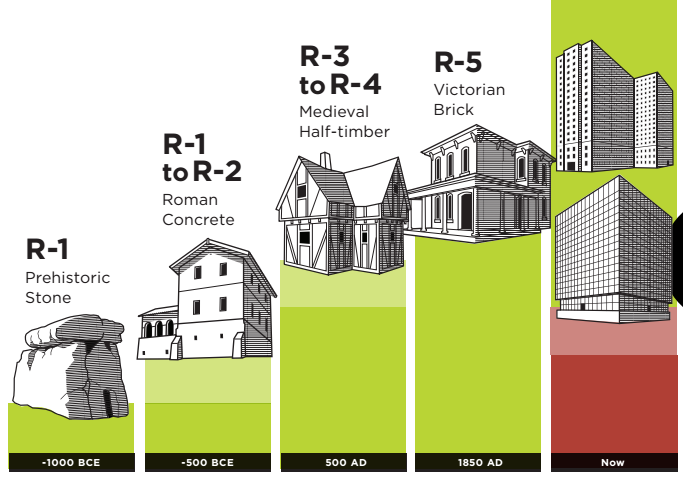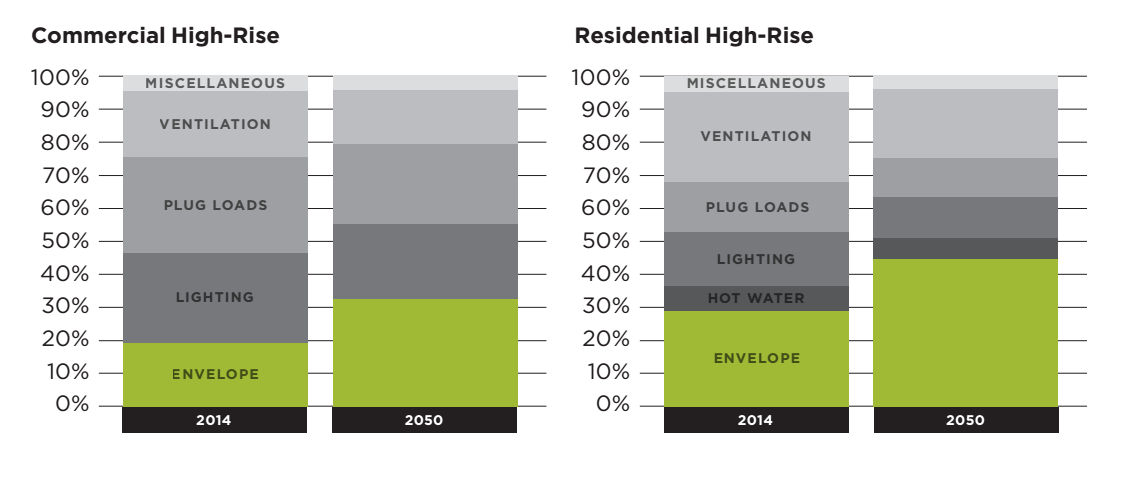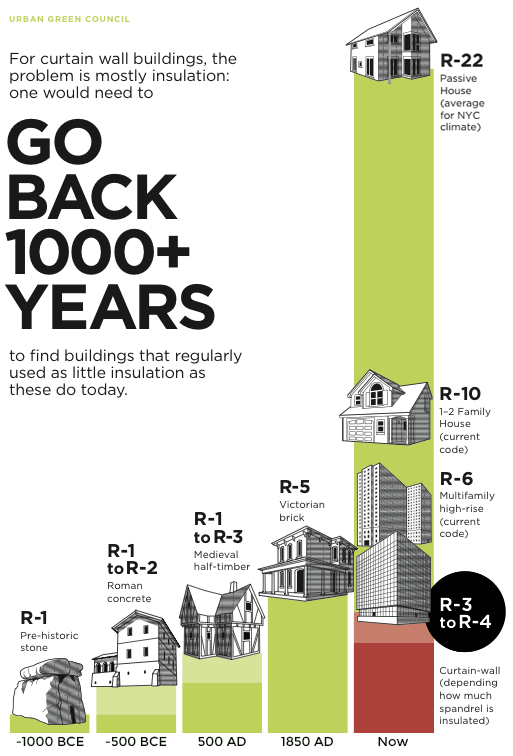“Green” construction in the U.S. has mostly been on a fad diet – one where trimming energy consumption is focused on the present but not the long run. That is the conclusion that New York-based nonprofit Urban Green Council found in their research on “high cholesterol buildings.”
The research is aptly named because how many buildings are insulated today focus more on how aesthetically pleasing the building will look, and all the green technology is clustered into what HVAC and other mechanical systems will the building be equipped with.
One example of such a trade-off of aesthetics and actual sustainability is in the selection of a building’s envelope: subpar walls, windows and roofs. “Unlike mechanical systems like air conditioners and ventilation fans, a building’s envelope is one of its longest-lasting components,” the report says.
A curtain wall made out of, say, glass, a notoriously poor insulator, has been a popular material to design and construct a building. The final building with all floor-to-ceiling windows, as the report boldly says, is as poorly insulated as a building from over a millennium ago.
However, the envelope of a building outlives all the other components; as lighting and HVAC systems are replaced with new, more efficient ones, a poorly insulated envelope will drag down the building’s potential of being at its most energy-efficient (see chart below).
The research pushes for loopholes in building codes to be closed. Currently, most green standards focus more on reduction of net energy consumption, hence, they make a trade-off where “they add more glass and make up for it with superior mechanical systems,” because floor-to-ceiling windows are a great selling or renting point and are in high demand.
Other recommendations the Council makes are for better glass, better design, and better training of contractors and subcontractors to stress on air sealing and elimination of thermal breaks.
The full report can be read in PDF here.
Related Stories
Adaptive Reuse | Oct 22, 2024
Adaptive reuse project transforms 1840s-era mill building into rental housing
A recently opened multifamily property in Lawrence, Mass., is an adaptive reuse of an 1840s-era mill building. Stone Mill Lofts is one of the first all-electric mixed-income multifamily properties in Massachusetts. The all-electric building meets ambitious modern energy codes and stringent National Park Service historic preservation guidelines.
MFPRO+ News | Oct 22, 2024
Project financing tempers robust demand for multifamily housing
AEC Giants with multifamily practices report that the sector has been struggling over the past year, despite the high demand for housing, especially affordable products.
Performing Arts Centers | Oct 21, 2024
The New Jersey Performing Arts Center breaks ground on $336 million redevelopment of its 12-acre campus
In Newark, N.J., the New Jersey Performing Arts Center (NJPAC) has broken grown on the three-year, $336 million redevelopment of its 12-acre campus. The project will provide downtown Newark 350 mixed-income residential units, along with shops, restaurants, outdoor gathering spaces, and an education and community center with professional rehearsal spaces.
Office Buildings | Oct 21, 2024
3 surprises impacting the return to the office
This blog series exploring Gensler's Workplace Survey shows the top three surprises uncovered in the return to the office.
Healthcare Facilities | Oct 18, 2024
7 design lessons for future-proofing academic medical centers
HOK’s Paul Strohm and Scott Rawlings and Indiana University Health’s Jim Mladucky share strategies for planning and designing academic medical centers that remain impactful for generations to come.
Sports and Recreational Facilities | Oct 17, 2024
In the NIL era, colleges and universities are stepping up their sports facilities game
NIL policies have raised expectations among student-athletes about the quality of sports training and performing facilities, in ways that present new opportunities for AEC firms.
Codes and Standards | Oct 17, 2024
Austin, Texas, adopts AI-driven building permit software
After a successful pilot program, Austin has adopted AI-driven building permit software to speed up the building permitting process.
Resiliency | Oct 17, 2024
U.S. is reducing floodplain development in most areas
The perception that the U.S. has not been able to curb development in flood-prone areas is mostly inaccurate, according to new research from climate adaptation experts. A national survey of floodplain development between 2001 and 2019 found that fewer structures were built in floodplains than might be expected if cities were building at random.
Seismic Design | Oct 17, 2024
Calif. governor signs limited extension to hospital seismic retrofit mandate
Some California hospitals will have three additional years to comply with the state’s seismic retrofit mandate, after Gov. Gavin Newsom signed a bill extending the 2030 deadline.
MFPRO+ News | Oct 16, 2024
One-third of young adults say hurricanes like Helene and Milton will impact where they choose to live
Nearly one-third of U.S. residents between 18 and 34 years old say they are reconsidering where they want to move after seeing the damage wrought by Hurricane Helene, according to a Redfin report. About 15% of those over age 35 echoed their younger cohort’s sentiment.



















